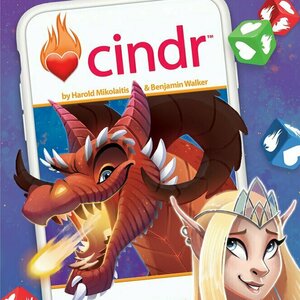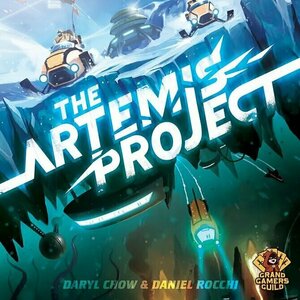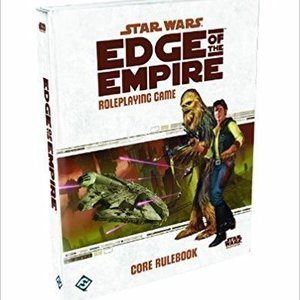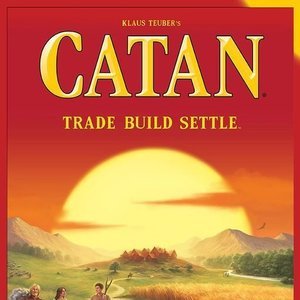Search
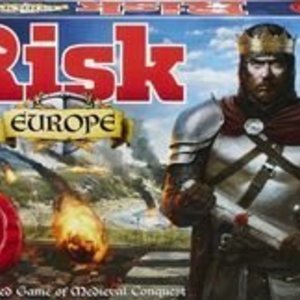
Risk Europe
Tabletop Game
Don a crown, raise the banners, and step into the role of a medieval king in feudal Europe in the...
Purple Phoenix Games (2266 KP) rated Cindr in Tabletop Games
Oct 29, 2020
Finally! A game to simulate dating dragons. I have been waiting for this theme all my life and it’s now a reality!! Well, okay, I have never really considered dating a dragon. But I know I would be signing up for a service app like Cindr to find my true dragon mate FO SHO if it were real. So how does a card game dragon sim play?
Cindr has players taking on the persona of a lonely fantasy creature looking for dragon love on a dating app. Players will be building their character by making choices and then swiping left or right to attempt going on dates with dragons that may be a great match. Roll the dice well and things may go to the Next Step, or even the Next Level. Roll poorly and your dear dragon date may send you home aflame.
DISCLAIMER: We were provided a copy of this game for the purposes of this review. This is a retail copy of the game, so what you see in these photos is exactly what would be received in your box. I do not intend to cover every single rule included in the rulebook, but will describe the overall game flow and major rule set so that our readers may get a sense of how the game plays. Furthermore I will be covering the game using the Solo rules (which are no different than the multiplayer rules). For more in depth rules, you may purchase a copy online or from your FLGS. -T
To setup, each player (or just yourself if playing the solo rules as I am) will choose a Character Profile card, filling in the blanks and circling choices to build their new fantasy persona. Each player will take one Try Again card that is useful during game play. Shuffle each Cindr App Dragon Profile and Whelp App Location card deck and place near each other. The dice will be placed near all the cards as well and the game is ready to begin!
On a turn a player will do each of these steps in order: Choose a Dragon to Date, Assemble the Dice Pool, Draw a Location Card, Check Dragon Powers & Location Bonuses, The Date / Roll Dice, Burned by a Dragon, and End of Turn. In the solo game players will be playing long enough to complete five dragon dates.
Choosing a Dragon to Date consists of reading the profile on the top of the deck and deciding whether to date or not. If not, swipe the profile into The Dating Pool below the deck. Players may swipe twice for free, and pay for additional swipes. After a dragon has been chosen, players will Assemble the Dice Pool by flipping the profile card and comparing with the stats they had made for their character at the beginning of the game. For each match players will receive a green die. For each value one space away a blue die, and for two spaces away a red die. Each die color has a different value of faces, but all have hearts and fires. Next the player(s) will Draw a Location Card from the top of the deck, read the front, then flip to the back. The back of the card will list any die up/downgrades and bonuses that may activate at different times during the date. Checking Dragon Powers & Location Bonuses will happen next and are self-explanatory.
Now that a dragon date has been procured and a location chosen, The Date may occur! When on the date, players will roll the four dice up to three times. The first time they are rolled is considered the Meet Up. The Next Step and The Next Level are the second and third rolls respectively. To be considered a full date, players will need to at least roll a second time. It is during The Date that players will be collecting hearts and trying to avoid fires. Three fires and the hearts are lost and the turn over. Players may stop rolling any time they wish and bank the hearts they have won to that point. The hearts then transfer to Love Points that are tracked at the bottom of the Character Profile card.
Should a player roll three flames and have no way to mitigate them, they lose all earned hearts for that round and their turn is over. They were, after all, Burned by a Dragon. The End of Turn is a cleanup phase to setup for the next player (or next round if playing solo). Play continues in this fashion until a player reaches 21+ Love Points in a multiplayer game or after the solo player has gone on five complete dates. Total the points to see who is the winner, or compare against the Love Meter card to see where you stack up.
Components. I’m just going to come out and say it now: I love everything about the components in this game. The dice are excellent and feature GOOD colors (not just boring primary colors). The app cards look like a phone’s screen and that’s brilliant. The Location cards are using a review service named Whelp, and also a stroke of brilliance. The art is amazing, save for the somewhat boring Second Chance cards, and one of the fonts is the same as my favorite game of all time – Valeria: Card Kingdoms, so I am fan for sure.
It’s no use hiding the fact that I am giddy playing this game. Even solo! Yes, I missed out on being able to date dragons from other players’ Dating Pools, but I have access to all the dragons anyway! Being able to adjust your choices during the game as a result of dragon powers or location powers is a neat twist that I wasn’t expecting. Those powers and bonuses are great and can really change the game, and contribute to an already large replayability score from me. It’s just a superb game that I love more and more every time I play it.
Cindr will probably never make my Top 10 Games of All Time, but it will most certainly remain in my Top 100 for years. Again, I wish I had not missed out on the Kickstarter for this one as I am gluttonous for KS stretch goal extras, but I am quite happy with where this game is at retail level. If you are looking for a great game with a hilarious and wonderful theme, plays quickly, and is excellent as a solo game too, then check out Cindr. You will never look at dragon dating sites the same way again. I promise.
Cindr has players taking on the persona of a lonely fantasy creature looking for dragon love on a dating app. Players will be building their character by making choices and then swiping left or right to attempt going on dates with dragons that may be a great match. Roll the dice well and things may go to the Next Step, or even the Next Level. Roll poorly and your dear dragon date may send you home aflame.
DISCLAIMER: We were provided a copy of this game for the purposes of this review. This is a retail copy of the game, so what you see in these photos is exactly what would be received in your box. I do not intend to cover every single rule included in the rulebook, but will describe the overall game flow and major rule set so that our readers may get a sense of how the game plays. Furthermore I will be covering the game using the Solo rules (which are no different than the multiplayer rules). For more in depth rules, you may purchase a copy online or from your FLGS. -T
To setup, each player (or just yourself if playing the solo rules as I am) will choose a Character Profile card, filling in the blanks and circling choices to build their new fantasy persona. Each player will take one Try Again card that is useful during game play. Shuffle each Cindr App Dragon Profile and Whelp App Location card deck and place near each other. The dice will be placed near all the cards as well and the game is ready to begin!
On a turn a player will do each of these steps in order: Choose a Dragon to Date, Assemble the Dice Pool, Draw a Location Card, Check Dragon Powers & Location Bonuses, The Date / Roll Dice, Burned by a Dragon, and End of Turn. In the solo game players will be playing long enough to complete five dragon dates.
Choosing a Dragon to Date consists of reading the profile on the top of the deck and deciding whether to date or not. If not, swipe the profile into The Dating Pool below the deck. Players may swipe twice for free, and pay for additional swipes. After a dragon has been chosen, players will Assemble the Dice Pool by flipping the profile card and comparing with the stats they had made for their character at the beginning of the game. For each match players will receive a green die. For each value one space away a blue die, and for two spaces away a red die. Each die color has a different value of faces, but all have hearts and fires. Next the player(s) will Draw a Location Card from the top of the deck, read the front, then flip to the back. The back of the card will list any die up/downgrades and bonuses that may activate at different times during the date. Checking Dragon Powers & Location Bonuses will happen next and are self-explanatory.
Now that a dragon date has been procured and a location chosen, The Date may occur! When on the date, players will roll the four dice up to three times. The first time they are rolled is considered the Meet Up. The Next Step and The Next Level are the second and third rolls respectively. To be considered a full date, players will need to at least roll a second time. It is during The Date that players will be collecting hearts and trying to avoid fires. Three fires and the hearts are lost and the turn over. Players may stop rolling any time they wish and bank the hearts they have won to that point. The hearts then transfer to Love Points that are tracked at the bottom of the Character Profile card.
Should a player roll three flames and have no way to mitigate them, they lose all earned hearts for that round and their turn is over. They were, after all, Burned by a Dragon. The End of Turn is a cleanup phase to setup for the next player (or next round if playing solo). Play continues in this fashion until a player reaches 21+ Love Points in a multiplayer game or after the solo player has gone on five complete dates. Total the points to see who is the winner, or compare against the Love Meter card to see where you stack up.
Components. I’m just going to come out and say it now: I love everything about the components in this game. The dice are excellent and feature GOOD colors (not just boring primary colors). The app cards look like a phone’s screen and that’s brilliant. The Location cards are using a review service named Whelp, and also a stroke of brilliance. The art is amazing, save for the somewhat boring Second Chance cards, and one of the fonts is the same as my favorite game of all time – Valeria: Card Kingdoms, so I am fan for sure.
It’s no use hiding the fact that I am giddy playing this game. Even solo! Yes, I missed out on being able to date dragons from other players’ Dating Pools, but I have access to all the dragons anyway! Being able to adjust your choices during the game as a result of dragon powers or location powers is a neat twist that I wasn’t expecting. Those powers and bonuses are great and can really change the game, and contribute to an already large replayability score from me. It’s just a superb game that I love more and more every time I play it.
Cindr will probably never make my Top 10 Games of All Time, but it will most certainly remain in my Top 100 for years. Again, I wish I had not missed out on the Kickstarter for this one as I am gluttonous for KS stretch goal extras, but I am quite happy with where this game is at retail level. If you are looking for a great game with a hilarious and wonderful theme, plays quickly, and is excellent as a solo game too, then check out Cindr. You will never look at dragon dating sites the same way again. I promise.
Purple Phoenix Games (2266 KP) rated The Artemis Project in Tabletop Games
Apr 6, 2021
I don’t know about you, but I spend more time than I should probably admit perusing Kickstarter and checking out new projects. Although, that is how I came across The Artemis Project. A game about exploration and colonization of one of Jupiter’s moons? Yes please! The campaign looked promising, the gameplay looked engaging, and the hype was real. Once I finally got the game, did it live up to my expectations? Keep reading to find out!
The Artemis Project is a game of dice/worker placement in which players are trying to build and sustain a prosperous colony on Jupiter’s moon Europa. Played over 6 rounds, players will take turns rolling and placing dice across the regions of the board to collect resources, construct buildings, recruit and train colonists, and partake in expeditions to explore this vast ice-land. To begin, follow the setup instructions in the rulebook for the appropriate player count. Each player receives a player board, dice, and markers in their chosen color. Populate the board for the first round, select a starting player, and the game is ready to begin!
Disclaimer: I do not intend to rehash the entire rulebook in this review, as there are just too many details. For a more in-depth look at The Artemis Project, pick up a copy from your FLGS or directly from the publisher! -L
To start each round, all players will simultaneously roll all 5 of their dice. Once players are happy with their results, the round is ready to properly begin. Each round is broken into three phases: Placement, Resolution, and Upkeep. To begin the Placement phase, starting with the first player, players will take turns assigning one die at a time to the 7 regions of the board. These regions are: Basecamp, Vents, Quarry, Gantry, Doorstep, Academy, and Outfitters. (I will explain each region in more detail in the next section!) The value of the dice placed in any region is important, because it will dictate what you are allowed to do, or when you are allowed to resolve the action for that region – so choose your placements wisely.
Once every player has placed all 5 of their dice, the Resolution phase begins. During the Resolution phase, each of the regions of the board will be resolved in order, allowing players to perform their region-specific actions. Resolution starts with Basecamp. Placing dice at Basecamp allows players to partake in Expeditions in an effort to earn Expedition Badges (which translate to end-game VP), as well as extra rewards. Each Expedition has a difficulty level which must be equaled or surpassed by the total of all dice placed on that card. If the difficulty is surpassed, the Expedition is a success and rewards are doled out accordingly, but if the Expedition fails, no rewards are earned by anyone.
The next 2 regions, Vents and Quarry, allow players to collect Energy and Minerals, respectively, and are resolved in the same way. Players will collect a number of resources equal to their played die value. Pretty straight-forward! Moving on to the Gantry region, the value of dice placed on any building tiles are considered bids for buying/constructing that building. You can bid against opponents for building tiles, but each bid must increase the previous amount. When resolving the Gantry, the highest value die on a tile is the winner, and that player must pay their die-amount in Minerals to collect that tile. Buildings are added to your colony, and allow you to perform special actions once they are fully-staffed (all colonist slots on the tile are filled).
Next is the Doorstep – depending on the value of dice you placed there, you will be able to recruit 1-3 new colonists. Recruiting a colonist costs you 2 Energy per new addition, and any new colonists you recruit can be placed immediately into any of your buildings (if space is available), or into your Shelter where they will wait to be used. The Academy region allows you to exchange a colonist of your choice for one of a different type/occupation, again, depending on the value of the die used. And finally, the Outfitters region does not resolved during this phase, because it’s action is performed immediately upon dice placement. Any dice placed to the Outfitters gives Tool Kits (used to manipulate die values at the start of each round) to the player, based upon the die value.
The remaining element of the Resolution phase is the Even card. At the start of each round, an Event card is drawn, and will pertain to a certain region of the board. During the Resolution phase, when that region is reached, the Event card will be resolved – either penalizing players or benefitting them in some way. I have purposefully left out a few elements of the Resolution phase for you to discover on your own!
Once all regions have been resolved, the round moves to the Upkeep phase. During this phase, all players can choose to move 1 colonist to a building tile, or swap any 2 colonists between buildings. This is not required, but can only be performed once during this phase. Next, if any players have fully-staffed buildings (all colonist slots are filled), they may activate the listed ability. And finally, for any colonists left in your shelter and not in a building, you must pay 1 Energy for each to keep them warm! The game board is now refreshed for the next round, a new starting player is selected, and the new round is ready to begin. After the 6th and final round, VPs are tallied – earned through number of building tiles, Expedition Badges, sets of resources, and sets of colonists – and the player with the most VP is the winner!
I know that seems like a lot, but I promise that once you start the first round, everything is pretty intuitive and the game flows well. The turn sequence and phases are logical and easy to understand. The game board itself has lots of helpful icons that work as reminders throughout gameplay, and the rulebook has a nice and concise round overview on the last page as well, which is easy to refer back to at a moment’s notice. I’ll go ahead and touch on components here, since I kind of already started to do so. The components in this game are great! The game board and cards are all sturdy and have colorful and immersive artwork. The dual-layered player boards are high quality, the colonist meeples are cute and effective, the building tiles and cardboard chits are strong and can definitely hold up to many plays, and the dice are easy to roll and read. Definitely an A+ on components from me.
I have to admit that The Artemis Project surprised me. At its core, it is a worker placement game, and that in and of itself lends itself to a certain gameplay. You’re trying to complete your own agenda, being the first to snag those important placements that you need to accomplish those goals, while also blocking opponents from doing the same. The thing that makes The Artemis Project unique is that the ‘workers’ in this game are dice. And their value is what dictates the resolution of each region. Just because you place a die in a region first, does not necessarily mean that you will get to resolve first – depending on how your opponents play, they could block you entirely! The use of dice adds an extra layer of strategy to the gameplay that really elevates it beyond a simple worker placement mechanic. Another great thing about this game is that there is no one way to win – there are several strategies that you could play by in an effort to earn VPs. Maybe you are trying to complete as many Expeditions as possible, or want to construct as many buildings as possible. Either strategy can work, and all strategies can easily be adapted and altered during gameplay.
I am so happy that I came across this game on Kickstarter. The game is strategic, engaging, and just fun to play. I’m not necessarily a huge fan of worker placement games, but the approach to the mechanic taken by The Artemis Project really puts a unique twist on it that adds to the gameplay. This is one KickStarter that was definitely worth the investment. Check it out if you haven’t heard of it, or if you’re looking to elevate your worker placement games. Purple Phoenix Games gives it an enterprising 10 / 12.
The Artemis Project is a game of dice/worker placement in which players are trying to build and sustain a prosperous colony on Jupiter’s moon Europa. Played over 6 rounds, players will take turns rolling and placing dice across the regions of the board to collect resources, construct buildings, recruit and train colonists, and partake in expeditions to explore this vast ice-land. To begin, follow the setup instructions in the rulebook for the appropriate player count. Each player receives a player board, dice, and markers in their chosen color. Populate the board for the first round, select a starting player, and the game is ready to begin!
Disclaimer: I do not intend to rehash the entire rulebook in this review, as there are just too many details. For a more in-depth look at The Artemis Project, pick up a copy from your FLGS or directly from the publisher! -L
To start each round, all players will simultaneously roll all 5 of their dice. Once players are happy with their results, the round is ready to properly begin. Each round is broken into three phases: Placement, Resolution, and Upkeep. To begin the Placement phase, starting with the first player, players will take turns assigning one die at a time to the 7 regions of the board. These regions are: Basecamp, Vents, Quarry, Gantry, Doorstep, Academy, and Outfitters. (I will explain each region in more detail in the next section!) The value of the dice placed in any region is important, because it will dictate what you are allowed to do, or when you are allowed to resolve the action for that region – so choose your placements wisely.
Once every player has placed all 5 of their dice, the Resolution phase begins. During the Resolution phase, each of the regions of the board will be resolved in order, allowing players to perform their region-specific actions. Resolution starts with Basecamp. Placing dice at Basecamp allows players to partake in Expeditions in an effort to earn Expedition Badges (which translate to end-game VP), as well as extra rewards. Each Expedition has a difficulty level which must be equaled or surpassed by the total of all dice placed on that card. If the difficulty is surpassed, the Expedition is a success and rewards are doled out accordingly, but if the Expedition fails, no rewards are earned by anyone.
The next 2 regions, Vents and Quarry, allow players to collect Energy and Minerals, respectively, and are resolved in the same way. Players will collect a number of resources equal to their played die value. Pretty straight-forward! Moving on to the Gantry region, the value of dice placed on any building tiles are considered bids for buying/constructing that building. You can bid against opponents for building tiles, but each bid must increase the previous amount. When resolving the Gantry, the highest value die on a tile is the winner, and that player must pay their die-amount in Minerals to collect that tile. Buildings are added to your colony, and allow you to perform special actions once they are fully-staffed (all colonist slots on the tile are filled).
Next is the Doorstep – depending on the value of dice you placed there, you will be able to recruit 1-3 new colonists. Recruiting a colonist costs you 2 Energy per new addition, and any new colonists you recruit can be placed immediately into any of your buildings (if space is available), or into your Shelter where they will wait to be used. The Academy region allows you to exchange a colonist of your choice for one of a different type/occupation, again, depending on the value of the die used. And finally, the Outfitters region does not resolved during this phase, because it’s action is performed immediately upon dice placement. Any dice placed to the Outfitters gives Tool Kits (used to manipulate die values at the start of each round) to the player, based upon the die value.
The remaining element of the Resolution phase is the Even card. At the start of each round, an Event card is drawn, and will pertain to a certain region of the board. During the Resolution phase, when that region is reached, the Event card will be resolved – either penalizing players or benefitting them in some way. I have purposefully left out a few elements of the Resolution phase for you to discover on your own!
Once all regions have been resolved, the round moves to the Upkeep phase. During this phase, all players can choose to move 1 colonist to a building tile, or swap any 2 colonists between buildings. This is not required, but can only be performed once during this phase. Next, if any players have fully-staffed buildings (all colonist slots are filled), they may activate the listed ability. And finally, for any colonists left in your shelter and not in a building, you must pay 1 Energy for each to keep them warm! The game board is now refreshed for the next round, a new starting player is selected, and the new round is ready to begin. After the 6th and final round, VPs are tallied – earned through number of building tiles, Expedition Badges, sets of resources, and sets of colonists – and the player with the most VP is the winner!
I know that seems like a lot, but I promise that once you start the first round, everything is pretty intuitive and the game flows well. The turn sequence and phases are logical and easy to understand. The game board itself has lots of helpful icons that work as reminders throughout gameplay, and the rulebook has a nice and concise round overview on the last page as well, which is easy to refer back to at a moment’s notice. I’ll go ahead and touch on components here, since I kind of already started to do so. The components in this game are great! The game board and cards are all sturdy and have colorful and immersive artwork. The dual-layered player boards are high quality, the colonist meeples are cute and effective, the building tiles and cardboard chits are strong and can definitely hold up to many plays, and the dice are easy to roll and read. Definitely an A+ on components from me.
I have to admit that The Artemis Project surprised me. At its core, it is a worker placement game, and that in and of itself lends itself to a certain gameplay. You’re trying to complete your own agenda, being the first to snag those important placements that you need to accomplish those goals, while also blocking opponents from doing the same. The thing that makes The Artemis Project unique is that the ‘workers’ in this game are dice. And their value is what dictates the resolution of each region. Just because you place a die in a region first, does not necessarily mean that you will get to resolve first – depending on how your opponents play, they could block you entirely! The use of dice adds an extra layer of strategy to the gameplay that really elevates it beyond a simple worker placement mechanic. Another great thing about this game is that there is no one way to win – there are several strategies that you could play by in an effort to earn VPs. Maybe you are trying to complete as many Expeditions as possible, or want to construct as many buildings as possible. Either strategy can work, and all strategies can easily be adapted and altered during gameplay.
I am so happy that I came across this game on Kickstarter. The game is strategic, engaging, and just fun to play. I’m not necessarily a huge fan of worker placement games, but the approach to the mechanic taken by The Artemis Project really puts a unique twist on it that adds to the gameplay. This is one KickStarter that was definitely worth the investment. Check it out if you haven’t heard of it, or if you’re looking to elevate your worker placement games. Purple Phoenix Games gives it an enterprising 10 / 12.
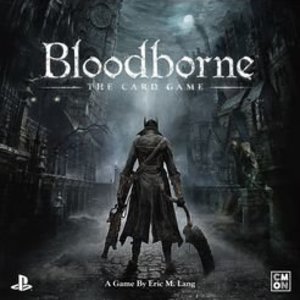
Bloodborne: The Card Game
Tabletop Game
Bloodborne: The Card Game designed by Eric M. Lang and based on Sony Entertainment and...
Dianne Robbins (1738 KP) created a post
Apr 13, 2019
Awix (3310 KP) rated Star Wars: Edge Of The Empire Core Rulebook in Tabletop Games
Mar 7, 2018 (Updated Mar 7, 2018)
Licence-to-print-money Star Wars RPG has had an impressive amount of work put into it; absolutely not a quick cash-in. The game manages to balance crunchy rules, narrative flexibility, and that elusive Star Warsiness with impressive elegance. The main rules mechanic, which involves pools of proprietary dice, may be off-putting for some (the rules are not especially intuitive and you'll be buying a lot of special dice), but once you get used to it the opportunities it gives everyone involved to shape the narrative of the game is rather special.
The EotE-specific material is good; the main 'obligation' mechanic is likely to get overlooked/house-ruled out, but the rest of the book is very solid. A beautiful looking book, very solidly put together, and the line as a whole is well-supported and of the same quality. Fully compatible with the Age of Rebellion and Force and Destiny lines, too: lack of repeated material between books is either a good thing (you seldom pay for the same thing twice) or a pain in the neck (if you're dying to have the rules for a certain race/ship/whatever you will end up buying a lot of other books). My group played this game for almost a year and never got close to feeling bored with the setting or the rules.
The EotE-specific material is good; the main 'obligation' mechanic is likely to get overlooked/house-ruled out, but the rest of the book is very solid. A beautiful looking book, very solidly put together, and the line as a whole is well-supported and of the same quality. Fully compatible with the Age of Rebellion and Force and Destiny lines, too: lack of repeated material between books is either a good thing (you seldom pay for the same thing twice) or a pain in the neck (if you're dying to have the rules for a certain race/ship/whatever you will end up buying a lot of other books). My group played this game for almost a year and never got close to feeling bored with the setting or the rules.
The Marinated Meeple (1853 KP) rated Blueprints in Tabletop Games
Mar 14, 2018
Dice Drafting (3 more)
Simple and easy to pick up and play quickly
Good for kids
light strategy
A cute and simple game, good for kids, interesting enough for adults to play with them
This is a fun little light game. You roll some dice, and then go around the table selecting the one that works best for your blue print and your building as you are building it. It's a small box so it can easily travel in a purse and be played at a pub while having pints of beer. Or take to the nephews house and play while having adult conversations. It has enough light interesting strategic choices to be for adults, and yet this would be great for kids to take on strategic choices that aren't intimidating. The choice is picking a color and a number die, the colors interact with the building a get points different ways, and the number is not only the value, but also the level, so you can't put a bigger number on top of a smaller number. You can play a few rounds in a half hour.
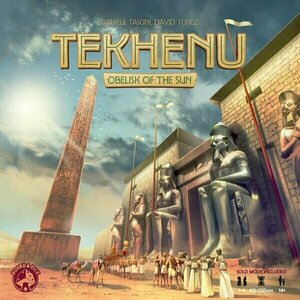
Tekhenu: Obelish of the Sun
Tabletop Game
Four millennia ago on the eastern bank of the Nile river was laid the foundation of the Temple of...
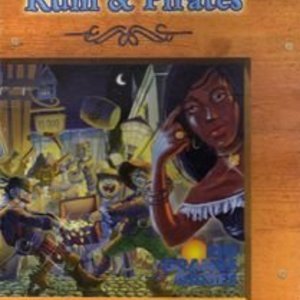
Rum & Pirates
Tabletop Game
Rum and Pirates is a relatively simple movement and collection game, known in German as Um Ru(h)m...
Boardgames Pirategames FeldGames
